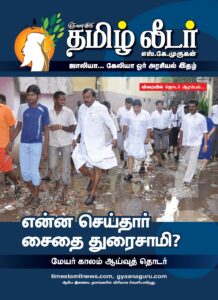The Multifaceted Benefits of Bharatanatyam
- Beyond Artistic Expression
Bharatanatyam is a classical dance form that intricately mirrors the movements found in nature. It encompasses the swaying of trees, the blooming of flowers, the gentle flow of the breeze, and the actions of birds, animals, and all living beings. This dance form allows dancers to use their bodies to communicate with the external world, while also facilitating a deep connection with their inner selves. The harmony achieved through Bharatanatyam between the outer world and the inner self extends far beyond mere artistic expression.
In 2016, the American Dance Therapy Association introduced ‘Dance Movement Therapy,’ promoting the use of dance movements to enhance emotional, social, cognitive, and physical integration. Dance Movement Therapy helps performers transcend cultural differences and serves as a versatile medium for various populations, fostering emotional, social, cognitive, and physical well-being. The benefits of dance therapy are extensive, and Bharatanatyam, practiced by artists worldwide, exemplifies these advantages.
Bharatanatyam offers a dynamic blend of entertainment, health, wellness, and a balance of internal and external energies, providing a path to spirituality.
The Physical Benefits of Bharatanatyam
Bharatanatyam is a dance form that involves intense physical activity, promoting discipline and perfect posture. This dance is often described as a form of artistic yoga that reveals spiritual beauty through physical movements. The dancer and the dance become one, transcending the boundaries of time and space.
Training in Bharatanatyam is rich with physical exercises that improve agility and bodily discipline. Students start with stretching and bending exercises similar to yoga before practicing basic steps called adavus. These steps are performed to various rhythms or thalams, which test the dancer’s speed and agility. The teacher, or Guru, demonstrates each step, and students imitate the movements, following the rhythm set by the Guru’s nattuvangam. This training helps them balance speed and agility and builds their stamina and strength.
After mastering the adavus, students learn the different pieces of the margams, which are the traditional sequences in Bharatanatyam. These sequences are based on three main aspects: Nritta, Nritya, and Natya. Nritta consists of pure rhythmic movements, Nritya combines expressions with rhythm, and Natya involves theatrical storytelling through expressions. The combination of these elements brings joy and transcendence to both the dancer and the audience. Performing Bharatanatyam requires extreme discipline to synchronize body movements, expressions, and concentration.
According to the Natya Shastra, the physical dynamics of Bharatanatyam involve a combination of body postures (bhangas), hand gestures (hastha mudras), neck movements (greeva bhedas), eye movements (drishti bhedas), foot movements (padha sancharana), and different gaits (chaaris). This full-body engagement strengthens the musculoskeletal system, improves breath control and lung capacity, enhances blood circulation, enriches cardiovascular health, and aids in weight loss.
A study by Surekha et al. (2018) examined female Bharatanatyam dancers aged 13 to 18 to evaluate their respiratory efficiency and lung function. The results showed that long-term practice significantly improved these dancers’ respiratory health. Bharatanatyam is a cost-effective way to maintain body fitness, resolve obesity issues, and promote overall physical health.


